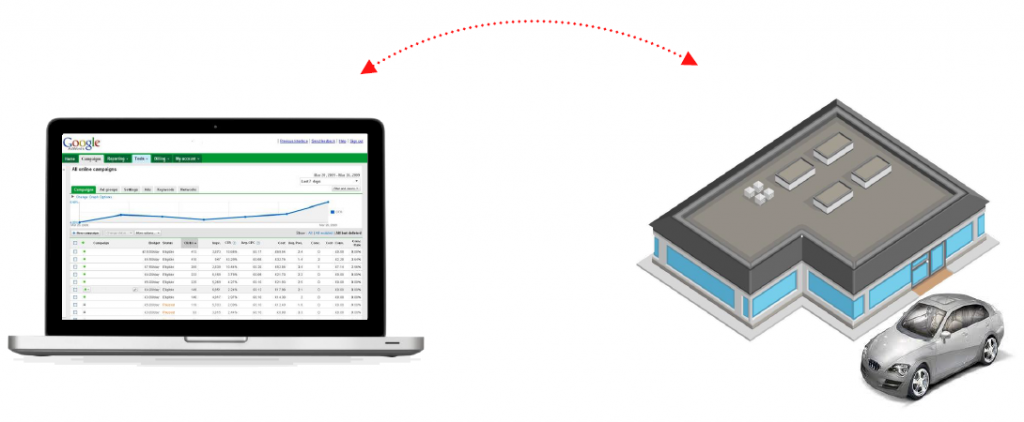I’ve just received an email from Google that contains the wonderful phrase ‘offline conversion tracking’, something that we’ve all been chasing for years. The reasons for my excitement; do we finally have the ability to follow the user into the sales pipeline once they’ve completed an online conversion? Can we then import that sales data back into AdWords to give us a clearer picture of the quality of leads and more importantly, bottom-line ROI?
At first glance this beta offering from Google looks like what we’ve been waiting for, but is it really all it’s cracked-up to be?
Up until now questions we’ve been struggling to answer in terms of PPC conversion data include:
- Are the leads we’re sending from PPC campaigns converting to sales offline?
- Is the volume of leads converting to valuable customers?
- Are the leads of a sufficient quality to convert into sales offline?
The current conversion tracking within AdWords is certainly adequate for on-site conversions, enquiries, sign-ups and page views and it enables us to attribute a value to these online conversions to get a feel for ROI. But let’s face it, unless we’re prepared to undertake some fairly manual look-up work using offline data, we then have no visibility of what happens after the online action.

We may therefore be optimising our AdWords campaigns based on the quantity of leads recorded online, but in reality, these leads may be of a lower quality than required, and we may be missing the real value of an ad group or key phrase.
AdWords Offline Conversion Tracking Aims To Answer Our Questions
According to Google’s presentation, their beta offline tracking aims to provide the following features:
- The ability to measure offline or otherwise untraceable conversion events up to 90 days after the click
- Import these events directly into AdWords
- Gain a deeper and more granular understanding of how each online click drives offline actions
- Distinguish between key phrases and clicks that lead to high vs. low quality leads
- Allow us to optimise campaigns by leveraging this additional intelligence to make more informed decisions.
That All Sounds Great, So How Does It Work?
Essentially, it’s a simple integration between AdWords, your website and your CRM system.

The Google Click ID (GCLID) is passed to your website, the visitor completes the desired online action and the GCLID is stored against their enquiry in your CRM system. If and when the enquiry converts into an offline sale the CRM entry gets updated with the sales data and the GCLID is uploaded back into AdWords, where reporting and bidding are updated with the additional sales data. Simple, right?
Requirements, Technical Considerations and Limitations
Assuming you have a centralised CRM system that can capture and store the GCLID and assuming that all sales information is stored within the CRM, then you should be good to go. However, implementation can be rather technical so having a good degree of technical support is highly advised.
The basic requirements for implementation are as follows:
- AdWords campaigns must drive to a lead generation or contact us form as a source of a meaningful number of lead-based conversions
- A new conversion action has to be created within AdWords
- Auto-tagging must be enabled. If a third-party click redirecting service is used, the redirect server needs to be able to pass the GCLID through to the advertiser’s site.
- To capture the GCLID and store it as a cookie, JavaScript code snippets have to be implemented on the site
The only limitations of the beta release of offline conversion tracking are:
Google’s bidding tools (Conversion Optimiser, Display Conversion Optimiser and Enhanced Cost Per Click) cannot optimise for one specific conversion type if multiple different types of conversion are tracked. For example if you’re tracking leads via a contact us form which are then being fed back in via Offline Conversion Tracking, but are also tracking page visits, video views, etc. as conversions, then the bidding tools will cannot be used with these multiple conversion types.
There is no API support as of yet, but I’m sure this will come in the future.
If you’re tracking Call Conversions through AdWords, these cannot be tracked in the beta.
So, Is It For You?
I think this may be the start of something really good, and knowing Google, they’ll develop the beta to include call tracking and API support.
The only issues I can see immediately are the 90-day conversion period, which may not be long enough for some B2B lead generation campaigns; the inability to use bidding tools to optimise for conversions if multiple conversion types are used and; in-house sales reporting systems being disparate and unable to store the GCLID against the client and accurately report back when a sale is complete.
If your company has a good, centralised CRM system, the ability to undertake the technical implementation and you’d like to take a closer look at what the Offline Conversion Tracking could do for you, when why not give us a call at Coast and we’ll look at signing you up for the beta release.
I think it’s the start of something really good . . . and a positive step towards finally being able to report accurate ROI from lead generation campaigns!
